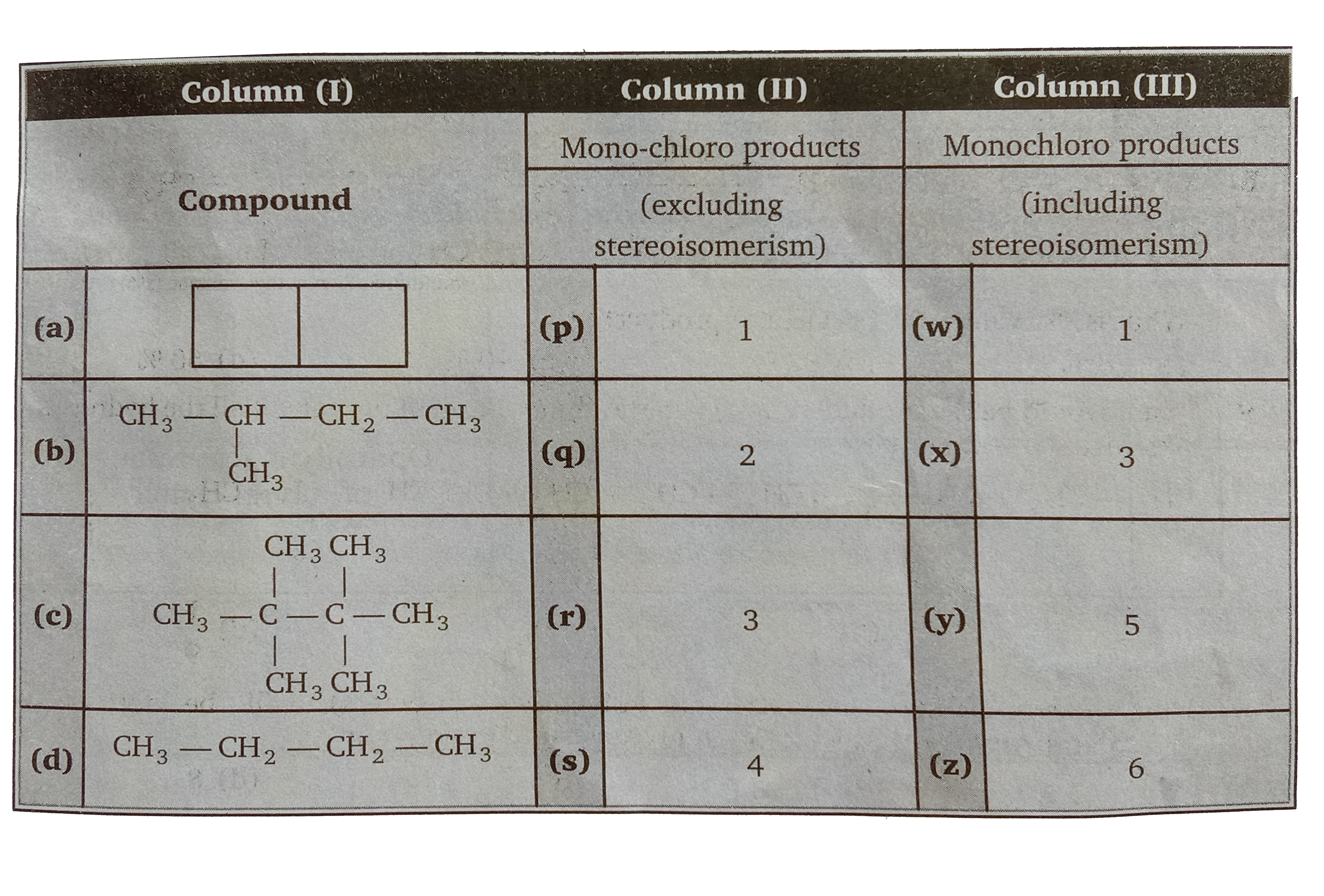Column I
I. Acrosome
II. Endometrium
III. Polar body
IV. Clitoris
Column II
(A) Rudimentary erectile tissue
(B) Uterus
(C) Oogenesis
(D) Spermatozoan
I - B, II - A, III - D, IV - C
I - D, II - B, III - C, IV - A
I - D, II - C, III - B, IV - A
I - D, II - C, III - A, IV - B
The correct Answer is:B
To solve the matching question, we need to pair the items from Column I with the correct descriptions from Column II. Let's analyze each item step by step.
1. Acrosome:
- The acrosome is a cap-like structure found on the head of spermatozoa (sperm cells). It contains enzymes that help the sperm penetrate the egg's outer layers during fertilization.
- Match: Acrosome → (D) Spermatozoan.
2. Endometrium:
- The endometrium is the inner lining of the uterus where the embryo implants after fertilization. It plays a crucial role in the menstrual cycle and pregnancy.
- Match: Endometrium → (B) Uterus.
3. Polar Body:
- Polar bodies are small cells that are produced during oogenesis (the formation of eggs) but do not develop into ova. They are a byproduct of meiosis in oocytes.
- Match: Polar Body → (C) Oogenesis.
4. Clitoris:
- The clitoris is a small, sensitive organ located at the top of the vulva, composed of erectile tissue. It plays a significant role in female sexual arousal.
- Match: Clitoris → (A) Rudimentary erectile tissue.
Final Matches:
- I. Acrosome → (D) Spermatozoan
- II. Endometrium → (B) Uterus
- III. Polar Body → (C) Oogenesis
- IV. Clitoris → (A) Rudimentary erectile tissue
- The acrosome is a cap-like structure found on the head of spermatozoa (sperm cells). It contains enzymes that help the sperm penetrate the egg's outer layers during fertilization.
- Match: Acrosome → (D) Spermatozoan.
- The endometrium is the inner lining of the uterus where the embryo implants after fertilization. It plays a crucial role in the menstrual cycle and pregnancy.
- Match: Endometrium → (B) Uterus.
- Polar bodies are small cells that are produced during oogenesis (the formation of eggs) but do not develop into ova. They are a byproduct of meiosis in oocytes.
- Match: Polar Body → (C) Oogenesis.
- The clitoris is a small, sensitive organ located at the top of the vulva, composed of erectile tissue. It plays a significant role in female sexual arousal.
- Match: Clitoris → (A) Rudimentary erectile tissue.
- I. Acrosome → (D) Spermatozoan
- II. Endometrium → (B) Uterus
- III. Polar Body → (C) Oogenesis
- IV. Clitoris → (A) Rudimentary erectile tissue
Similar Questions
Knowledge Check
Column I
I. Acrosome
II. Endometrium
III. Polar body
IV. Clitoris
Column II
(A) Rudimentary erectile tissue
(B) Uterus
(C) Oogenesis
(D) SpermatozoanAI - B, II - A, III - D, IV - CBI - D, II - B, III - C, IV - ACI - D, II - C, III - B, IV - ADI - D, II - C, III - A, IV - BColumn I
I. Testis
II. Vulva
III. Prostatic fluid
IV. Production of ova
Column II
(A) Gives specific smell to semen
(B) Oogenesis
(C) Located in scrotum
(D) Labia majoraAI - C, II - D, III - A, IV - BBI - D, II - B, III - C, IV - ACI - D, II - C, III - B, IV - ADI - D, II - C, III - A, IV - BColumn I
I. Hyaluronidase
II. Corpus luteum
III. Colostrum
IV. Antrum
Column II
(A) Graafian follicle
(B) Mammary gland
(C) Progesterone
(D) Acrosomal reactionAI - B, II - A, III - D, IV - CBI - D, II - B, III - C, IV - ACI - D, II - C, III - B, IV - ADI - D, II - C, III - A, IV - B
Column I
I. Acrosome
II. Leydig's cells or interstitial cells
III. Graafian follicles
IV. Hymen
Column II
(A) Ovary
(B) Vagina
(C) Sperm
(D) Testis
View SolutionColumn I
I. Inguinal canal
II. Clitoris
III. Seminiferqus tubules
IV. Polar body
Column II
(A) Homologous to penis
(B) Testis
(C) Connection of scrotum with abdomen
(D) Oogenesis
View SolutionColumn I
I. Morula
II. Polyspermy
III. Implantation
IV. Prolactin
Column II
(A) Fertilization membrane
(B) Solid ball of cells
(C) Mammary gland
(D) Endometrium
View SolutionMatch column I with column II and select the correct option from the codes given below.
Column IColumn IIA.Acrosome(i)Rudimentary erectile tissueB.Endometrium(ii)UterusC.Polar body(iii)OogenesisD.Clitoris(iv)Spermatozoon
View Solutionmatch the following column a. small pox (column I) b.German measles(column I) c.Mumps(column I) d.AIDS(column I) e. Polimyelitis (column I) . (i) paramyxo virus (column II) (ii) polio virus(column II) (iii) variola virus (column II) ( iv) Rubella virus(column II) (v) Retro virus(column II).
View Solution


